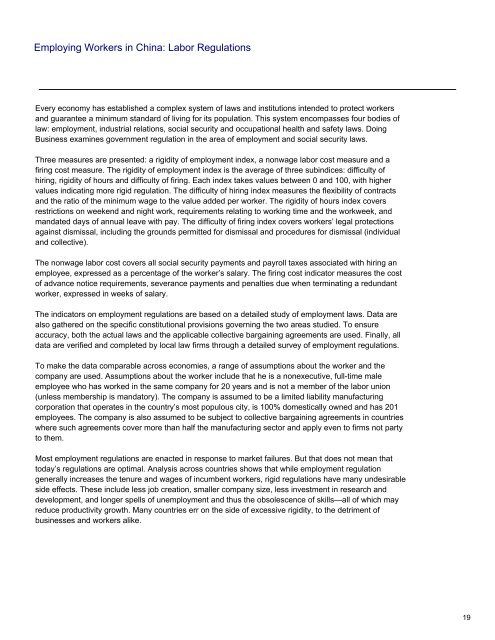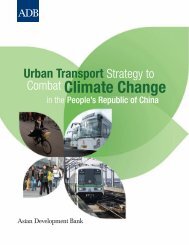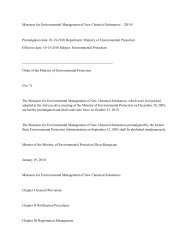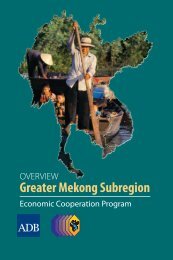View full report - NEEC
View full report - NEEC
View full report - NEEC
- No tags were found...
You also want an ePaper? Increase the reach of your titles
YUMPU automatically turns print PDFs into web optimized ePapers that Google loves.
Employing Workers in China: Labor RegulationsEvery economy has established a complex system of laws and institutions intended to protect workersand guarantee a minimum standard of living for its population. This system encompasses four bodies oflaw: employment, industrial relations, social security and occupational health and safety laws. DoingBusiness examines government regulation in the area of employment and social security laws.Three measures are presented: a rigidity of employment index, a nonwage labor cost measure and afiring cost measure. The rigidity of employment index is the average of three subindices: difficulty ofhiring, rigidity of hours and difficulty of firing. Each index takes values between 0 and 100, with highervalues indicating more rigid regulation. The difficulty of hiring index measures the flexibility of contractsand the ratio of the minimum wage to the value added per worker. The rigidity of hours index coversrestrictions on weekend and night work, requirements relating to working time and the workweek, andmandated days of annual leave with pay. The difficulty of firing index covers workers’ legal protectionsagainst dismissal, including the grounds permitted for dismissal and procedures for dismissal (individualand collective).The nonwage labor cost covers all social security payments and payroll taxes associated with hiring anemployee, expressed as a percentage of the worker’s salary. The firing cost indicator measures the costof advance notice requirements, severance payments and penalties due when terminating a redundantworker, expressed in weeks of salary.The indicators on employment regulations are based on a detailed study of employment laws. Data arealso gathered on the specific constitutional provisions governing the two areas studied. To ensureaccuracy, both the actual laws and the applicable collective bargaining agreements are used. Finally, alldata are verified and completed by local law firms through a detailed survey of employment regulations.To make the data comparable across economies, a range of assumptions about the worker and thecompany are used. Assumptions about the worker include that he is a nonexecutive, <strong>full</strong>-time maleemployee who has worked in the same company for 20 years and is not a member of the labor union(unless membership is mandatory). The company is assumed to be a limited liability manufacturingcorporation that operates in the country’s most populous city, is 100% domestically owned and has 201employees. The company is also assumed to be subject to collective bargaining agreements in countrieswhere such agreements cover more than half the manufacturing sector and apply even to firms not partyto them.Most employment regulations are enacted in response to market failures. But that does not mean thattoday’s regulations are optimal. Analysis across countries shows that while employment regulationgenerally increases the tenure and wages of incumbent workers, rigid regulations have many undesirableside effects. These include less job creation, smaller company size, less investment in research anddevelopment, and longer spells of unemployment and thus the obsolescence of skills—all of which mayreduce productivity growth. Many countries err on the side of excessive rigidity, to the detriment ofbusinesses and workers alike.19











